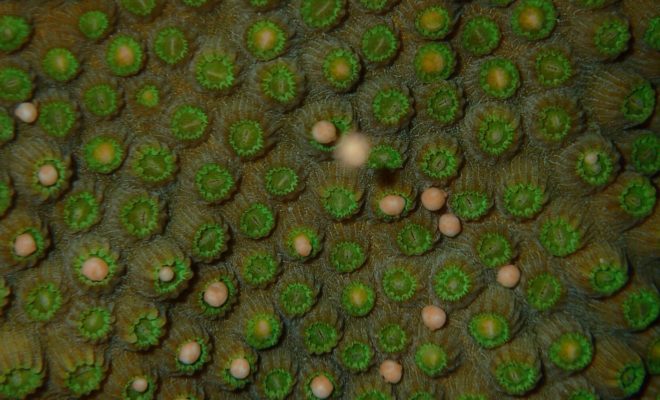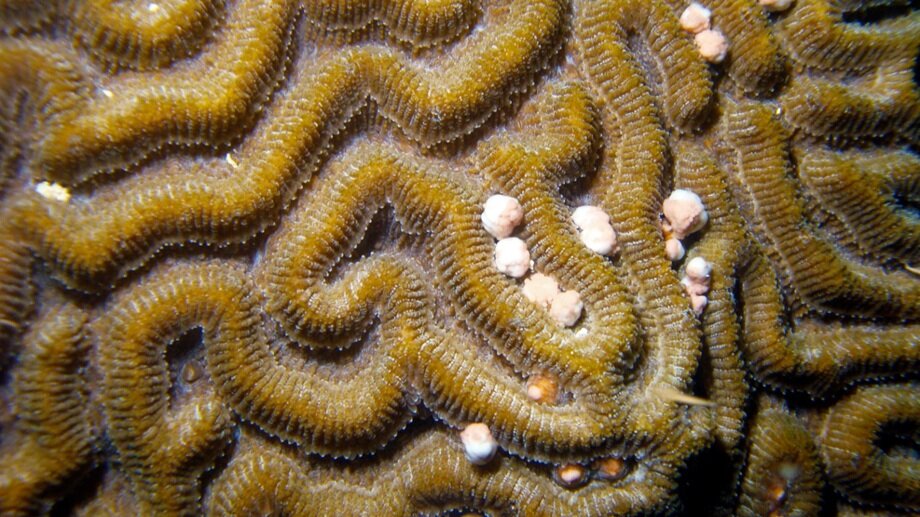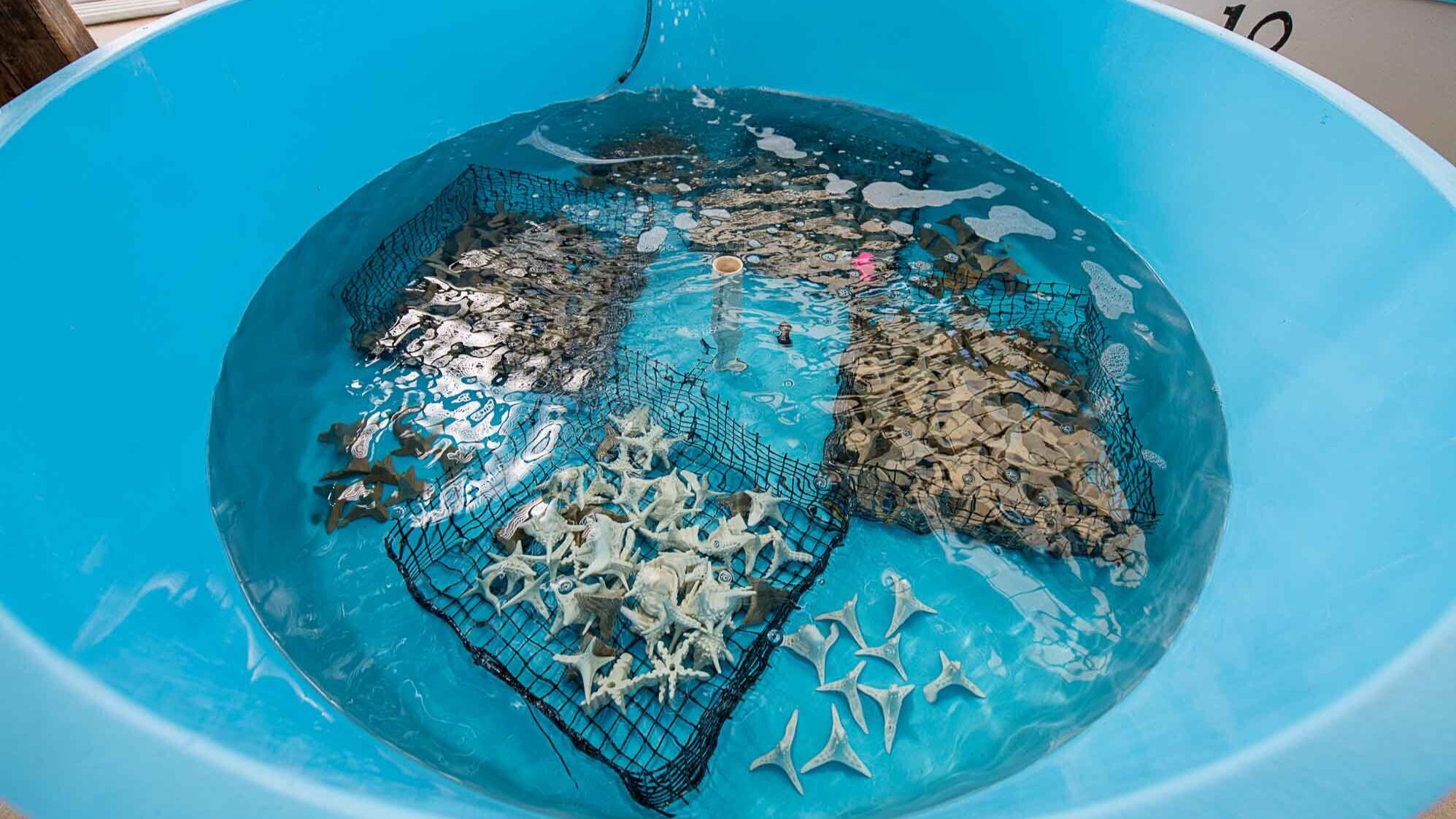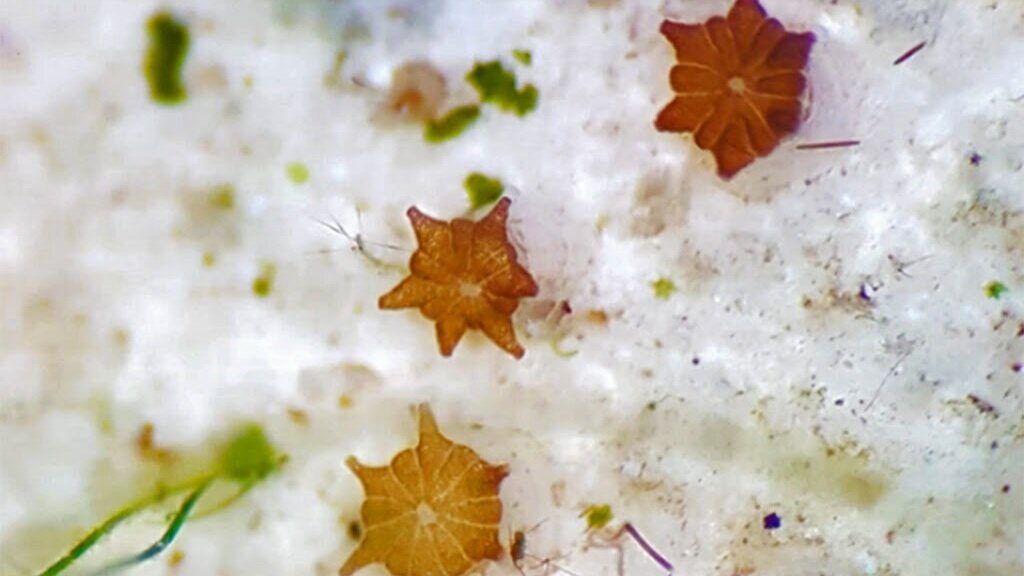Love is in the water!
Why?
Because many corals and marine invertebrates spawn between May and October. And when the water is warmest in July, August and September, we can observe massive spawning in many corals, like star, brain and Acroporid species.
When this happens, corals of the same species release millions of gametes (i.e., eggs and sperm) into the water column all at once. On SCUBA, coral spawning looks like a swirling, pink and white underwater blizzard!
Brain coral colony (Colpophyllia natans) releasing gamete bundles from their polyps. These bundles contain the vital sperm and eggs that our scientists need to raise baby corals in the lab.
For the Coral Innovation Hub, coral spawning is more than just a captivating underwater phenomenon. Our scientists take advantage of summertime spawning events to get into the ocean, collect coral gametes from different colonies, and grow thousands of genetically distinct baby corals in the lab.
Lab-based nursery growing thousands of baby corals on cement substrates; individual corals are invisible unless viewed under a microscope.
Then, we plant the baby corals onto damaged or degraded reefs that desperately need restoration.
“The low abundance of corals on reefs is compromising their capacity to produce viable offspring during spawning events,” said Natalia Hurtado, Research Associate at the Perry Institute for Marine Science and Research Scientist at the Cape Eleuthera Institute. “Rearing sexually produced corals will improve genetic diversity and their adaptation capabilities.”
In the long term, our team is hopeful these restoration efforts will create more coral habitat for reef fish and invertebrates.
Microscopic view of three star coral babies (called recruits) growing in the lab.
Are you eager to see coral spawning this summer?
Or perhaps you work for a non-profit, dive shop, or organization that is interested in joining the fight to save coral reefs in The Bahamas?
If so, check out our 2021 Coral Spawning Predictions for The Bahamas. You’ll discover:
1 – Which coral species are expected to spawn this summer
2 – The day(s) each species is likely to spawn
3 – The time(s) each species is likely to spawn (& when you should plan your dives)
For any questions, or to submit spawning observations (location, date, time & species) in The Bahamas, please contact: nataliahurtado@islandschool.org
“Conducting monitoring dives during predicted spawning times, will provide important baseline information to upscale restoration efforts, enhance population recovery, improve population connectivity, and eventually contribute to the success of reproductive events,” Natalia said.



